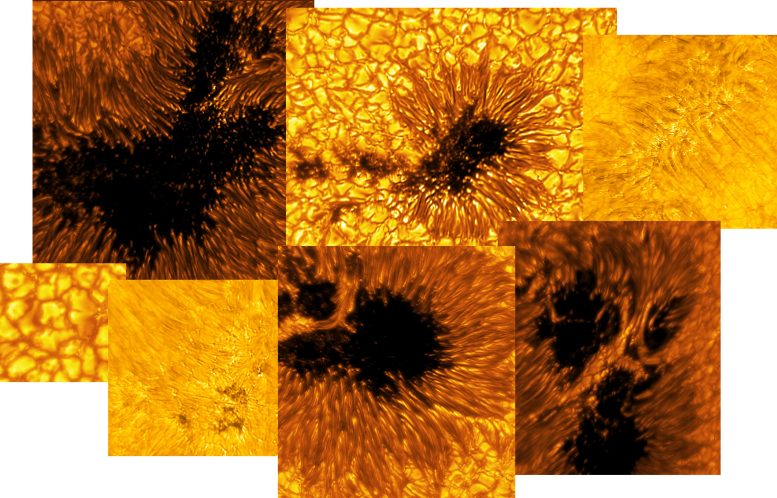
A mosaic of new solar images produced by the Inouye Solar Telescope was released, previewing solar data taken during the telescope’s first year of operations during its commissioning phase. Images include sunspots and quiet-Sun features. Credit: NSF/AURA/NSO
Preview of early data from the Inouye Solar Telescope obtained during its Cycle 1 observing window showcases sunspots and quiet-Sun regions
The NSF’s Inouye Solar Telescope has released new high-resolution images of the Sun, showcasing sunspots and quiet regions. The images, obtained during the Cycle 1 operations window in 2022, highlight the telescope’s capability to capture unprecedented solar details, helping scientists understand the Sun’s magnetic field and solar storms.
The National Science Foundation’s (NSF) Daniel K. Inouye Solar Telescope released eight new images of the Sun, previewing the exciting science underway at the world’s most powerful ground-based solar telescope. The images feature a variety of sunspots and quiet regions of the Sun obtained by the Visible-Broadband Imager (VBI), one of the telescope’s first-generation instruments.
The Inouye Solar Telescope’s unique ability to capture data in unprecedented detail will help solar scientists better understand the Sun’s magnetic field and drivers behind solar storms.
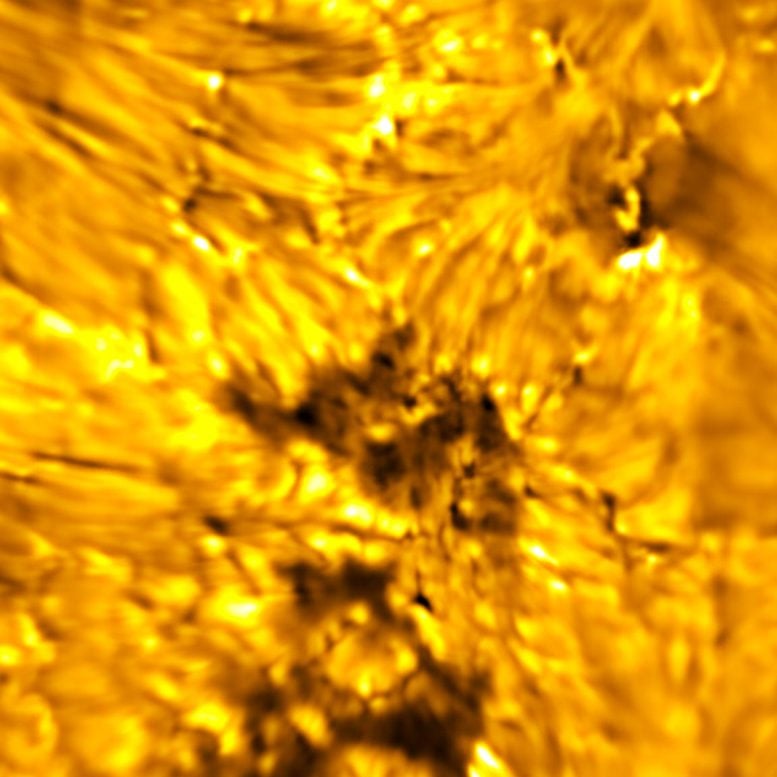
The lower atmosphere (chromosphere) of the Sun exists above the Sun’s surface (photosphere). In this image, dark, fine threads (fibrils) are visible in the chromosphere emanating from sources in the photosphere – notably, the dark pores/umbral fragments and their fine structure. A pore is a concentration of magnetic field where conditions are not met to form a penumbra. Pores are essentially sunspots that have not had or will never have a penumbra. Penumbra: The brighter, surrounding region of a sunspot’s umbra characterized by bright filamentary structures. Image Title: Pores/Umbral Fragments, Fibrils, and other Fine-Structure in the Sun’s Atmosphere and Surface PID: PID_1_16 Large Field of View: 30,720km x 30,720km. Credit: NSF/AURA/NSO Image Processing: Friedrich Wöger(NSO), Catherine Fischer (NSO) Science Credit: Juan Martínez-Sykora (Bay Area Environmental Research Institute)
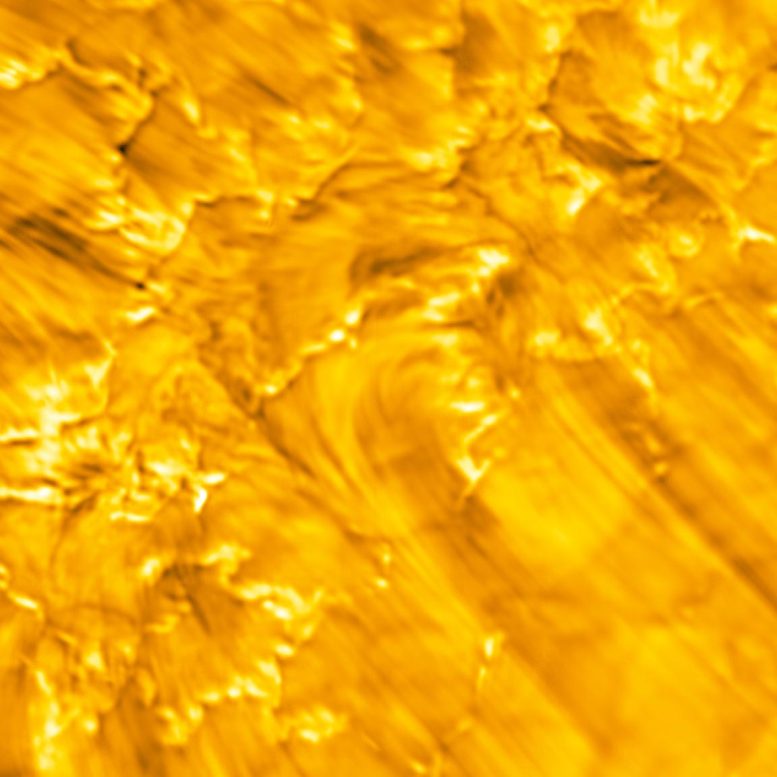
In this image, the fibrillar nature of the solar atmosphere is exemplified. Dark, fine threads (fibrils) are ubiquitous in the chromosphere. The outline of bright structures are signature of the presence of magnetic fields in the photosphere below. This image was captured by the Inouye Solar Telescope during a coordinated observation campaign with NASA’s Parker Solar Probe and ESA’s Solar Orbiter. Credit: NSF/AURA/NSO
The sunspots pictured are dark and cool regions on the Sun’s “surface,” known as the photosphere, where strong magnetic fields persist. Sunspots vary in size, but many are often the size of Earth, if not larger. Complex sunspots or groups of sunspots can be the source of explosive events like flares and coronal mass ejections that generate solar storms. These energetic and eruptive phenomena influence the outermost atmospheric layer of the Sun, the heliosphere, with the potential to impact Earth and our critical infrastructure.
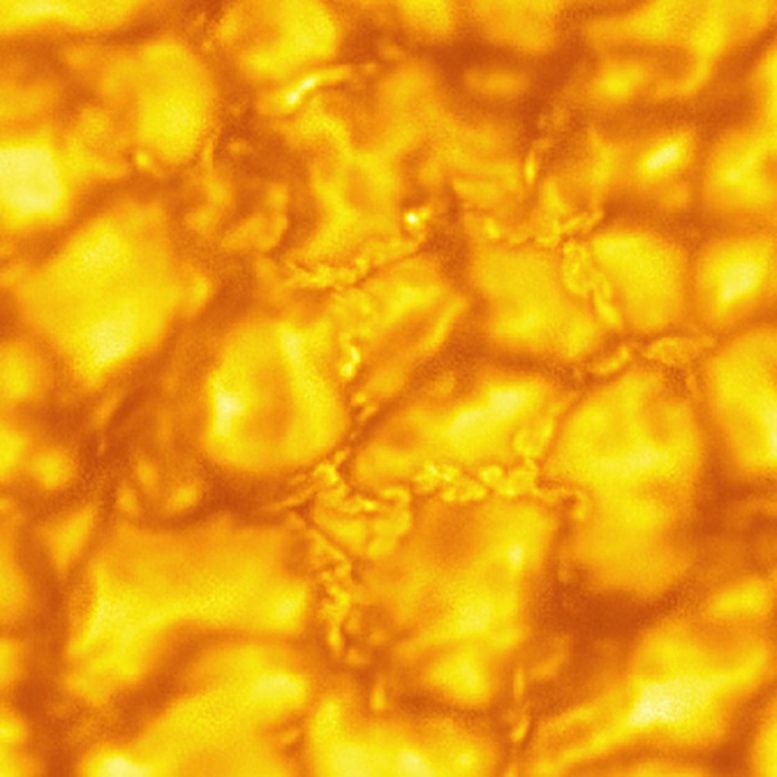
In this image, the fine-structure of the quiet Sun is observed at its surface or photosphere. Heating plasma rises in the bright, convective “bubbles” (granules) then cools and falls into the dark, intergranular lanes. Within these intergranular lanes, bright structures are observed, indicating the manifestations or signatures of magnetic field. The Inouye Solar Telescope helps to detect these “small” magnetic elements in great detail. Image Title: Solar Granules, Intergranular Lanes, and Magnetic Elements of the Quiet Sun PID: PID_1_49 Large Field of View: 30,720km x 30,720km. Credit: NSF/AURA/NSO Image Processing: Friedrich Wöger(NSO), Catherine Fischer (NSO)
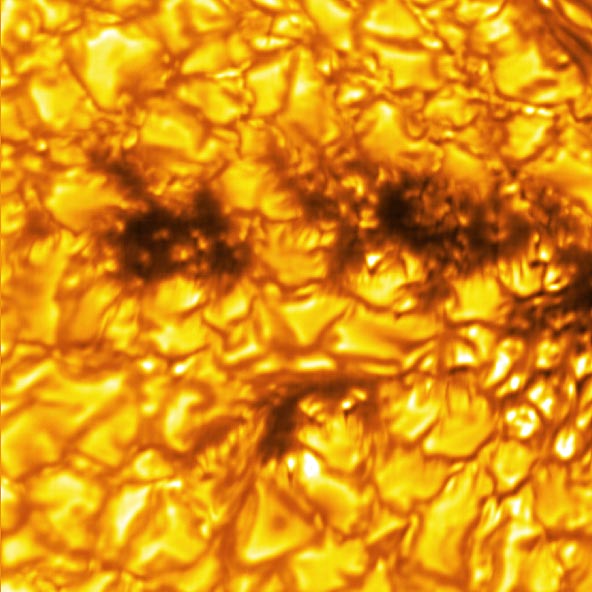
A sunspot is identifiable by its dark, central umbra and surrounding filamentary-structured penumbra. A closer look reveals the presence of nearby umbral fragments – essentially, a sunspot that’s lost its penumbra. These fragments were previously a part of the neighboring sunspot, suggesting that this may be the “end phase” of a sunspot’s evolution. While this image shows the presence of umbral fragments, it is extraordinarily rare to capture the process of a penumbra forming or decaying. Umbra: Dark, central region of a sunspot where the magnetic field is strongest. Penumbra: The brighter, surrounding region of a sunspot’s umbra characterized by bright filamentary structures. Image Title: Umbral Fragments Suggest the “End Phase” of a Sunspot PID: PID_1_22 Large Field of View: 30,720km x 30,720km. Credit: NSF/AURA/NSO Image Processing: Friedrich Wöger(NSO), Catherine Fischer (NSO) Science Credit: Jaime de la Cruz Rodriguez (Stockholm University)
In the quiet regions of the Sun, the images show convection cells in the photosphere displaying a bright pattern of hot, upward-flowing plasma (granules) surrounded by darker lanes of cooler, down-flowing solar plasma. In the atmospheric layer above the photosphere, called the chromosphere, we see dark, elongated fibrils originating from locations of small-scale magnetic field accumulations.
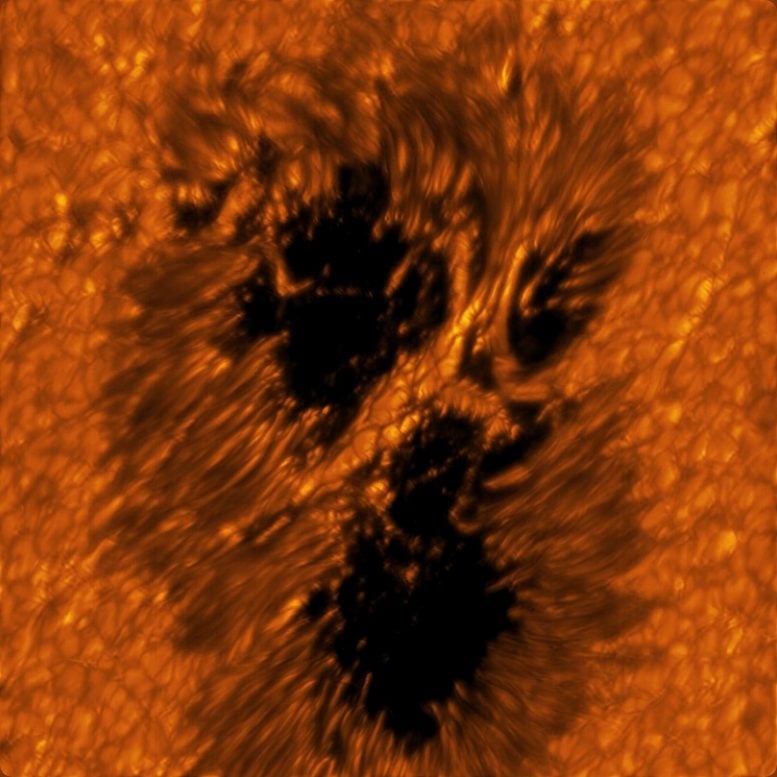
A light bridge is seen crossing a sunspot’s umbra from one end of the penumbra to the other. Light bridges are believed to be the signature of the start of a decaying sunspot, which will eventually break apart. Light bridges are very complex, taking different forms and phases. It is unknown how deep these structures form. This image shows one example of a light bridge in remarkable detail. Umbra: Dark, central region of a sunspot where the magnetic field is strongest. Penumbra: The brighter, surrounding region of a sunspot’s umbra characterized by bright filamentary structures. Image Title: A Light Bridge Captured in a Sunspot PID: PID_1_50 Large Field of View: 30,720km x 30,720km. Credit: NSF/AURA/NSO Image Processing: Friedrich Wöger(NSO), Catherine Fischer (NSO) Science Credit: Tetsu Anan (NSO)
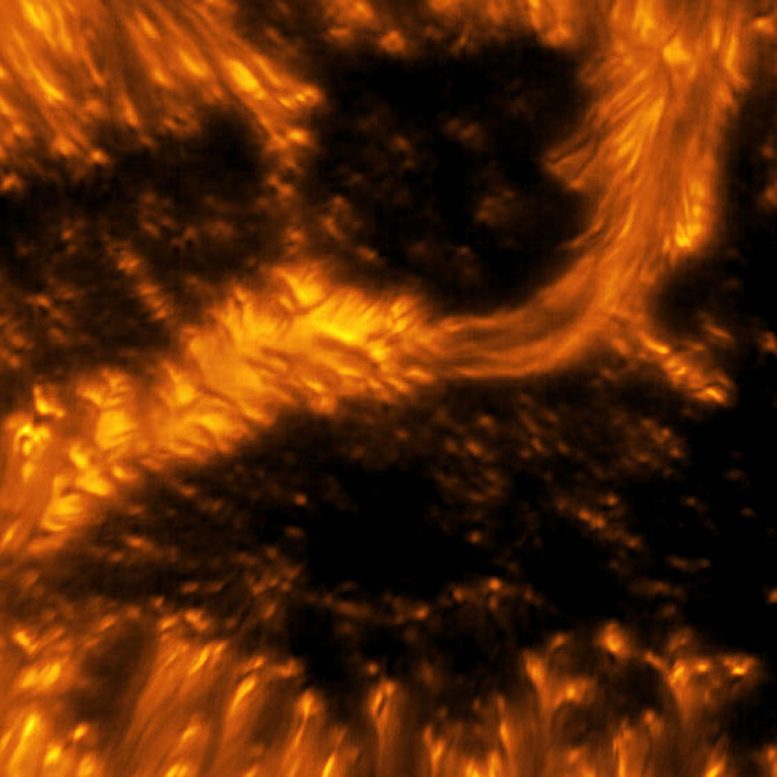
A detailed example of a light bridge crossing a sunspot’s umbra. In this picture, the presence of convection cells surrounding the sunspot is also evident. Hot solar material (plasma) rises in the bright centers of these surrounding “cells,” cools off, and then sinks below the surface in dark lanes in a process known as convection. The detailed image shows complex light bridge and convection cell structures on the Sun’s surface or photosphere. Light bridge: A bright solar feature that spans across an umbra from one penumbra to the other. It is a complex structure, taking different forms and phases, and is believed to be the signature of the start of a decaying sunspot. Umbra: Dark, central region of a sunspot where the magnetic field is strongest. Image Title: Properties of Convection Cells and Light Bridge Seen Around a Sunspot PID: PID_1_29 Large Field of View: 30,720km x 30,720km. Credit: NSF/AURA/NSO Image Processing: Friedrich Wöger(NSO), Catherine Fischer (NSO) Science Credit: Philip Lindner at Leibniz-Institut für Sonnenphysik (KIS)
The recently inaugurated telescope is in its Operations Commissioning Phase (OCP), a learning and transitioning period during which the observatory is slowly brought up to its full operational capabilities.
The international science community was invited to participate in this phase through an Operations Commissioning Phase Proposal Call. In response to these calls, investigators submitted science proposals requesting telescope time for a specific and detailed science goal. In order to optimize for science return, while balancing the available observing time and the technical needs in this very early operational phase, the proposals were subsequently peer-reviewed by a proposal review committee and telescope time was granted by a Telescope Allocation Committee. The selected proposals were executed in 2022 during the Cycle 1 operations window.
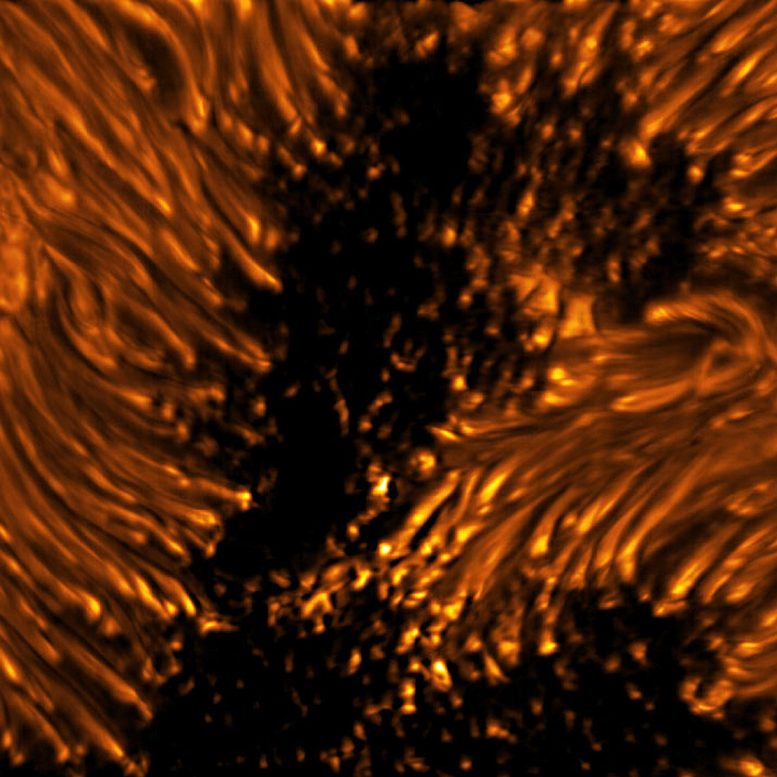
This image reveals the fine structures of a sunspot in the photosphere. Within the dark, central area of the sunspot’s umbra, small-scale bright dots, known as umbral dots, are seen. The elongated structures surrounding the umbra are visible as bright-headed strands known as penumbral filaments. Umbra: Dark, central region of a sunspot where the magnetic field is strongest. Penumbra: The brighter, surrounding region of a sunspot’s umbra characterized by bright filamentary structures. Image Title: Sunspot Umbral Dots and Penumbral Filaments in Detail PID: PID_1_27 Large Field of View: 30,720km x 30,720km. Credit: NSF/AURA/NSO Image Processing: Friedrich Wöger(NSO), Catherine Fischer (NSO) Science Credit: Rolf Schlichenmaier at Leibniz-Institut für Sonnenphysik (KIS)
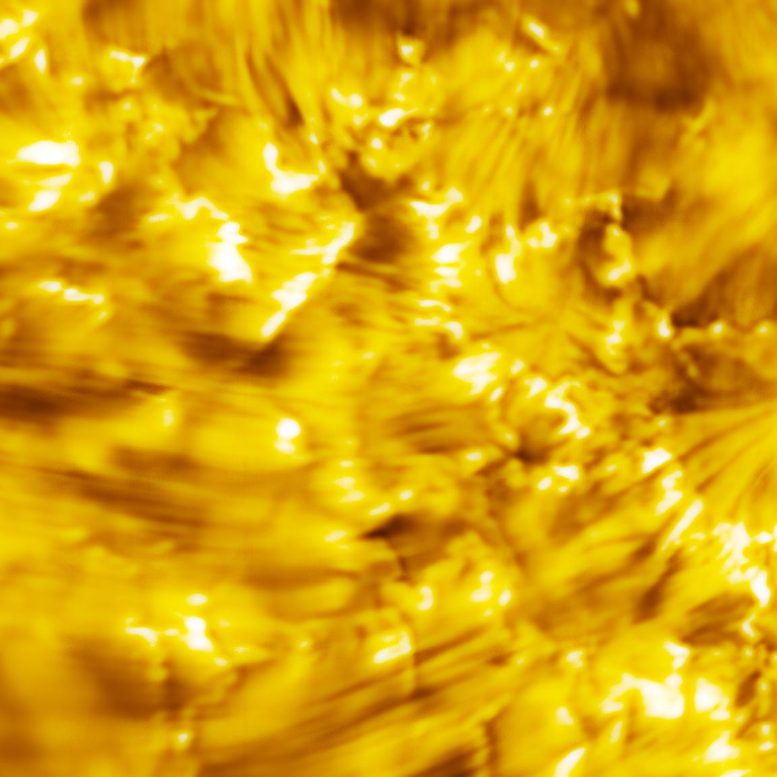
This image, taken by Inouye Solar Telescope in coordination with the ESA’s Solar Orbiter, reveals the fibrillar nature of the solar atmosphere. In the atmosphere, or chromosphere, fine, dark threads of plasma (fibril) are visible emanating from the magnetic network below. The outline of bright structures are signature of the presence of magnetic fields. Image Title: The Fibrillar Nature of the Solar Atmosphere PID: PID_1_123 Large Field of View: 30,720km x 30,720km. Credit: NSF/AURA/NSO Image Processing: Friedrich Wöger(NSO), Catherine Fischer (NSO) Science Credit: Public DDT Data
The newly released images make up a small fraction of the data obtained from the first Cycle. The Inouye Solar Telescope’s Data Center continues to calibrate and deliver data to the scientists and public.
As the Inouye Solar Telescope continues to explore the Sun, we expect more new and exciting results from the scientific community – including spectacular views of our solar system’s most influential celestial body.

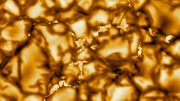
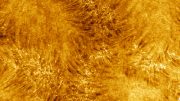
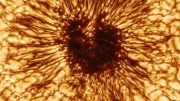

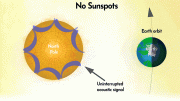
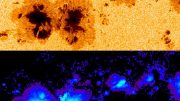
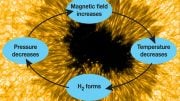
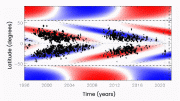
First time I’ve seen Senator “In-No-Way” associated with *science*.
Yes, the bizarrely mis-spelled “Inouye” doesn’t exist in Japanese . . . the romanization of the good senator’s name *should* be “Inoue” . . . the hiragana does not contain the archaic “ye” character . . . I think it’s a holdover from WWII, in which the good senator served with distinction in Italy, and was almost fatally wounded in the carrying-out of his duties. Back then they were fuzzy on the Hepburn System of romanization and subsequently their spellings were all over the place.
But it’s pronounced exactly as you wrote it—”In No Way.”
I’m glad he has such luminiferous entities named after him.